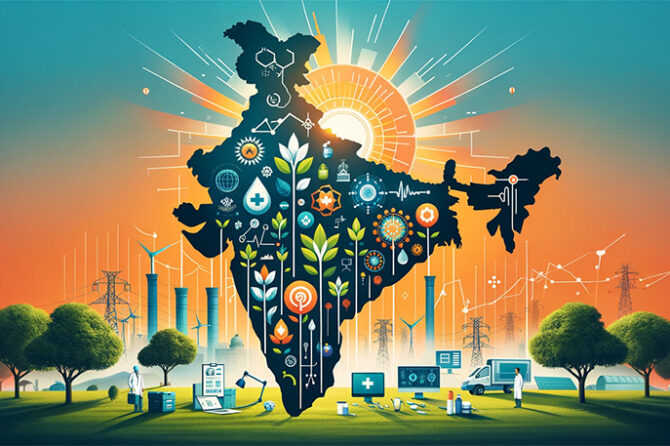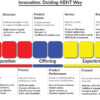
India’s healthcare sector is undergoing a remarkable transformation, entering a golden age characterized by a unique combination of rising affluence, booming insurance, enhanced public spending, and a COVID-induced boost. This confluence of factors has significantly altered the landscape of healthcare in India, presenting both challenges and opportunities.
Rising Affluence Fuels Healthcare Demand
The increasing per capita income in India is leading to higher disposable incomes. This economic shift is fuelling a growing demand for better healthcare services. As reported by the World Bank, India’s GDP per capita has steadily risen in the past decade, correlating with increased healthcare spending. The McKinsey Global Institute forecasts that by 2030, India’s healthcare sector could reach $372 billion, highlighting the direct impact of rising affluence on healthcare demand.
Booming Insurance Sector Empowers Individuals
The expansion of health insurance coverage in India is a pivotal factor in this transformation. More individuals now have the financial means to access quality private healthcare services. According to the Insurance Regulatory and Development Authority of India (IRDAI), there has been a significant increase in health insurance penetration over the last few years, empowering a larger segment of the population to seek better healthcare.
Enhanced Public Spending on Healthcare
The Indian government’s commitment to healthcare is evident in its increased allocation of resources and infrastructure development. The Union Budget for 2021-2022 saw a 137% increase in healthcare spending, as reported by the Ministry of Finance. This investment is aimed at strengthening national institutions and creating new health infrastructure.
COVID-Induced Boost in Healthcare Investment
The pandemic has undeniably brought health into sharper focus, spurring investments in pharmaceutical manufacturing and technology adoption. This period has seen an accelerated shift towards digital healthcare solutions, telemedicine, and an increased emphasis on pharmaceutical R&D.

Capital Chasing Growth in Healthcare
Private Hospitals: A Hub for Investors
Private hospitals in India are witnessing a surge in private equity deals and stock market valuations. Investors are eyeing the immense potential in this space, driven by the sector’s rapid growth and profitability prospects.
Global Appeal Attracts Investment
India’s favorable demographic and economic trends make it an attractive destination for global investors. Policies like Production Linked Incentives (PLIs) for pharmaceuticals further incentivize capital infusion, making India a hotspot for healthcare investment.
Shifting Dynamics in Healthcare Preferences
Consumer preferences in India are gradually shifting towards high-quality care offered by private hospitals. This trend is supported by the increasing financial capacity of the middle class and the availability of insurance coverage.
The Road Ahead: Challenges and Opportunities
Improving Quality of Care
Despite the boom, there is a pressing need to address the quality of care, especially in rural areas. The disparity in healthcare quality between urban and rural regions remains a significant challenge.
Addressing the Manpower Shortage
The shortage of skilled healthcare professionals, particularly in specialized fields, is another hurdle. There’s a need for focused efforts in education and training to bridge this gap.
Biologics: The Next Frontier
Mastering the production and delivery of complex biopharmaceuticals represents a key area for future growth. Success in this domain could position India as a global leader in cutting-edge healthcare solutions.
Balancing Growth with Affordability
One of the critical challenges facing India’s healthcare sector is maintaining affordability while pursuing growth. Ensuring that healthcare services remain accessible to the entire population is crucial for sustainable development.
Tips for Navigating the Healthcare Sector
- Stay updated on the latest trends and technologies in healthcare.
- Invest in skill development for a robust career in healthcare.
- Advocate for accessible and affordable healthcare.
- Support healthcare innovation and entrepreneurship initiatives.
Concluding Thoughts
India’s healthcare sector stands at the cusp of a significant transformation. With the right balance of policy support, technological advancements, and focus on quality and affordability, India can not only meet its domestic healthcare needs but also emerge as a leader in global healthcare.
Guiding References and Books for Further Reading
Reports from The Economic Times, McKinsey & Company, and Invest India provide detailed insights into the sector’s growth.
Books:
- “The Future of Healthcare in India”
- “Healthcare Revolution in India.”
Prof. Dr. Prahlada N. B
10 January 2024
Chitradurga.

















As rightly said by you Prahlada Sir,
The healthcare delivery system in lndia, is a diverse & complex sector that includes both public & private institutions.
The size of Indian healthcare sector in 2022 was 372 billion dollars.
The Indian healthcare system is also boosting medical tourism in India.
More than 2 million patients visit India each year, from all over the world for medical, wellness & IVF
treatment. It generates a revenue of 6 billion dollars for the industry & is expected to reach 13 billion dollars by 2026.
The right to health is not explicitly mentioned as a fundamental right in the Indian constitution. To assure the government’s greater commitment to health, the right to health must be included as a fundamental right.
As stated in the Economic Survey 2020-21, there is a need to establish 'Information Utilities' to eliminate information asymmetry in private healthcare. It will make the healthcare system more cost-effective,
increase the public expenditures on health to at least 3% of GDP.
Government of India must spend at least 70% of its fund , mainly on improving the primary health care system, because it forms the foundation of the health care system in India.
Reply